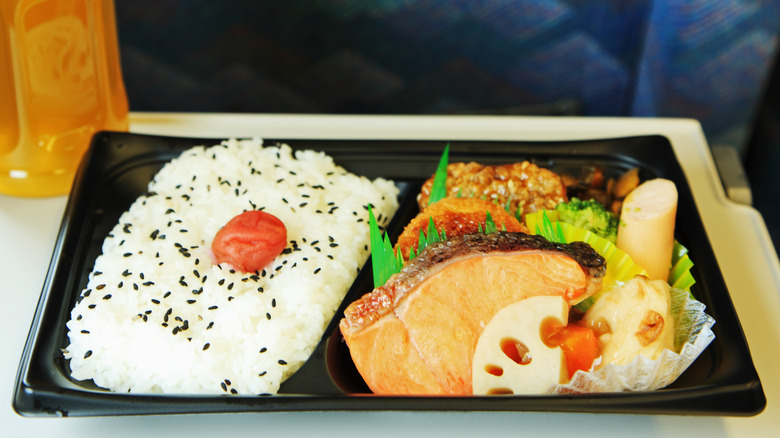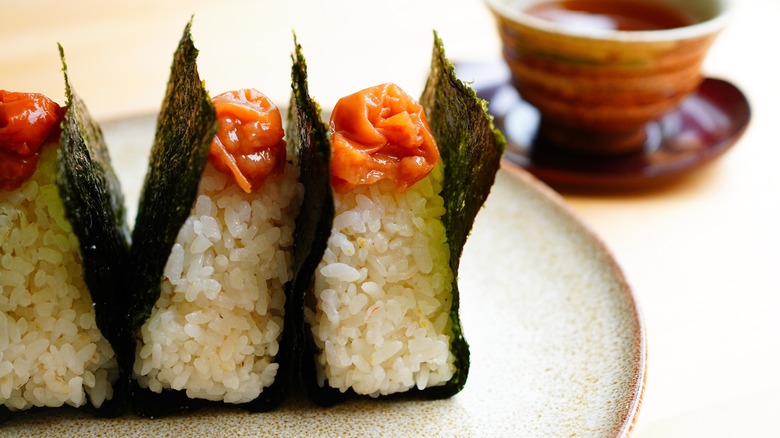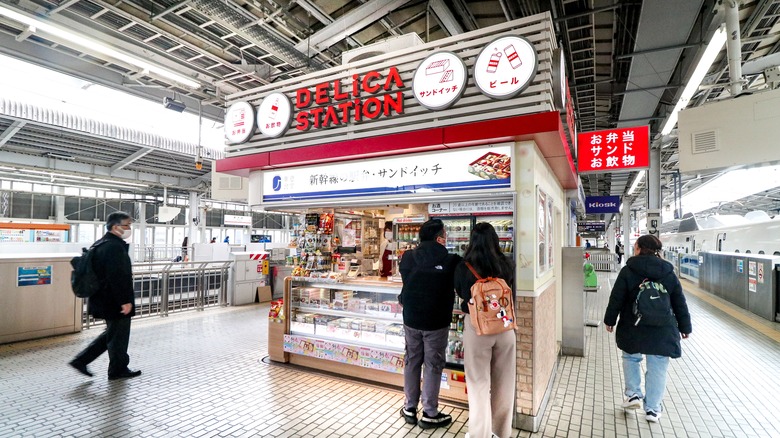The Unique Bento Boxes You Can Find At Train Stations In Japan
The humble bento is one of Japan's most recognizable culinary landmarks — and one of its most successful exports, known the world over as a delicious, accessible, and portable lunch. But while it's appreciated by many, this little lunch box has a surprisingly storied history.
The bento has taken on many forms, and been known by many names. One of those names, "ekiben", was born alongside one of Japan's other cultural icons — its famous railways. The name is a portmanteau of "eki", meaning train station, and "bento". Unsurprisingly, these are bento sold at railway stations and designed to be eaten on trains.
It's generally agreed that the first ekiben was sold in 1885 at Utsunomiya Station, when a line connecting it with the nearby Omiya station opened. These early ekiben were simple compared to what we see today, consisting of umeboshi onigiri — rice balls stuffed with pickled plums, a staple of ancient Japanese lunches. As the Japanese rail network grew, locals began to put their own regional spins on the dish, and soon ekiben became a symbol of the diversity of Japanese cuisine.
How the ekiben changed over time
The first ekiben were, despite their simplicity, considered something of a luxury. In the early days of rail, train travel hadn't yet developed into the democratic form of transport it represents today. Instead, it was restricted to the upper classes due to its high cost — as was the white rice used to make the pickled radish onigiri sold at stations. Over time, however, both train travel and white rice became more accessible to the general public.
Eventually, the ekiben would come to resemble the makunouchi, another type of bento traditionally sold between acts at Kabuki performances, a classical form of Japanese theater. These bentos consisted of a portion of rice, accompanied by meat or fish, pickled vegetables, and other sides such as tamago (egg) or miso soup. The makunouchi is still sold today, and represents what many around the world might recognize as the "bento box."
In reality, however, the bento — and particularly the ekiben — is far more varied than most realize. As it made the transition from a luxury to a meal for the masses, it grew more complex in its composition. While local cuisines across Japan have their own versions, that variety is also driven by the seasonality of certain ingredients, and can include anything from sashimi rice bowls to noodles and even luxurious wagyu beef.
The ekiben today
Now a cultural touchstone and adored across Japan, the ekiben has truly taken on a life of its own in the modern era, with more variations than ever. Some larger stations, such as Tokyo's central hub, sell hundreds of different ekiben — meaning there really is something for everyone.
The opening of the famous "shinkansen" (or bullet train, as it's more commonly known) in 1964 led to its own special boxes — some, such as the "shinkansen E7", are even shaped like the bullet trains they're meant to be eaten on! That particular version actually harkens back to the original ekiben, containing umeboshi onigiri.
Others, however, are somewhat more high-tech, with engineers having devised self-heating lunch boxes so you can enjoy a hot meal on the train, whenever you want. So, if you're traveling to Japan — or just looking for some inspiration for your next lunch break — there's an ekiben for you. They're so much more than just meals on wheels.



